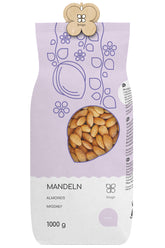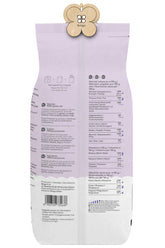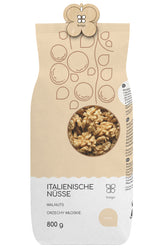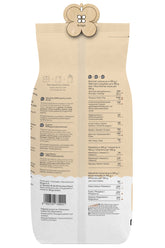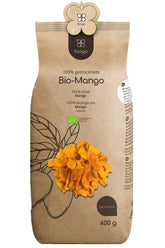Pickles, that's diet for offal
- The pickling process
- What are fermented products?
- The effect of silage on the intestine
- Other properties of silage
- Products most popular in Poland
- Contraindications for consuming silage
- Summary
- Bibliography
Curing is one of the oldest methods of preserving food. The first attempts to use this process date back to 7000 BC, but scientists suspect that the first silages may have appeared by chance even earlier. At that time, people were experimenting with making bread and then cheese. The basis of the fermentation process is sugar and water, and the curing process also produces lactic acid, which lowers the pH of the product undergoing this process. By lowering the pH to a value of 4-3.5, an acidic environment is created, which is responsible for inhibiting the development of potentially harmful microorganisms. The original function of pickles was to ensure the preservation of finished products and extend their shelf life.
The pickling process
Under certain conditions, fermented products, or otherwise popular silage, can be formed. More specifically, it is a process of lactic acid fermentation carried out by lactic acid bacteria. These microorganisms convert the sugars contained in plants into lactic acid, which is responsible for the sour taste of pickles. This acid inhibits putrefaction processes caused by bacteria that cannot survive in such an acidic environment, and thanks to its presence, food is preserved. According to Buch, this process is most effective at a sugar content of 1% to 1.5% and a water content of 70%. Temperatures in the range of 15-20 degrees Celsius ensure the correct process flow. Furthermore, the pickling process itself takes at least 10 to even 40 days, but it should be noted that the duration depends on how finely the vegetables or fruits are chopped and the acidity of the final product. The amount of salt in the brine or other additives added to the glass also has an influence{1}.
What are fermented products?
The fermentation process itself is widely used. Therefore, it's not surprising that the range of products that can be included in this respectable category is also large. Among the most popular are:
– Vegetables such as pickled cucumbers, cabbage, garlic, onions or beets and many others (basically any vegetable can be fermented)
– Fruits such as apples, pears, and lemons. They are much less popular than pickled vegetables, but they are best suited for this purpose, and their taste may pleasantly surprise you.
– Dairy products such as yogurt, buttermilk, kefir or cheese
– fermented soybeans, i.e. natto and the classics of Japanese cuisine, i.e. soy sauce
– Drinks such as kvass, fermented tea or kombucha
– alcoholic products, including wine, beer or moonshine
Fermented meat and fish are also worth mentioning. Fish is particularly popular in Scandinavian countries. Pickled herring is one of the greatest delicacies, but its taste and aroma may not appeal to everyone.
The effect of silage on the intestine
Most of the beneficial health effects of silage are found in the intestines. However, before they reach the intestines, they must pass through the mouth, esophagus, and stomach. Nevertheless, the microorganisms it contains survive transport to the intestines. There is ample evidence for this. For example, Streptococcus Thermophilus and Lactobacillus delbrückii subsp. bulgaricus were detected in duodenal samples within 15 minutes of ingesting fresh yogurt{2}.
Organisms created during the curing process have a number of beneficial properties for our bodies. The process itself improves the nutritional value of the products subjected to it. One of the chemical compounds that has a significant impact on intestinal health is acetylcholine. It is a neurotransmitter that regulates functions of the nervous system. It increases peristalsis, which has a positive effect on constipation. On the other hand, bacteria that enter the intestine feed the natural bacterial flora and synthesize additional nutrients. Furthermore, they increase the absorption of fermented products and thus of macro- and micronutrients. It should also be noted that cucumbers are lower in calories due to the fermented sugars they contain. The increased number of lactic acid bacteria can also reduce oxidative stress by activating the enzyme responsible for reducing the amount of free radicals. They can also protect against chemical damage{3}.
Other properties of silage
Fermented foods, which are processed and very sterile over time, can play an important role in the proper functioning of the intestinal microflora. Obviously, this depends on the type of bacteria used for fermentation. The composition of the silage will vary depending on the type and type of healthy bacteria. Let's focus, however, on the most popular and widely available, namely pickled fruits and vegetables, as well as fermented milk products. They have been shown to have a positive effect on improving digestion and increasing the bioavailability of vitamins and minerals. Fermented fruits and vegetables also contain a significant amount of vitamin C, which is a natural antioxidant. They have hypoallergenic properties, can prevent osteoporosis, and may reduce the risk of heart muscle disease. Silage has been reported to have a positive effect on patients with prediabetes. The results of 8 weeks of taking kimchi (a pickled vegetable mixture) have clearly shown that with its help it is possible to reduce insulin resistance and also increase tissue sensitivity to insulin.
In addition, fermented products reduce bad cholesterol. This phenomenon is not yet fully understood but there are already several theories. This is most likely due to bacteria binding bile acids with cholesterol to form a complex. The next step in this process is to excrete the products in the feces. By producing yellow acids, the body absorbs cholesterol from the blood and from there goes to the liver. The effect is to reduce cholesterol in the blood. This theory, however, is not 100% confirmed; it does not change the fact that after taking silage, cholesterol in the blood actually drops.
Products most popular in Poland
Across the country, we find many cucumber lovers. Some value them for their flavor, while others value them for their health benefits. For everyone, there's something healthy and good.
Pickled cabbage and cucumbers are, I suspect, the most popular. They're a good source of glucosinolates, ascorbate, and ascorbic acid. They have an effect on reducing DNA damage caused by free radicals and may reduce the mutation factor in cancer patients. This effect hasn't been fully confirmed.
Kefir , sometimes the "better" version called yogurt, is a fermented milk drink from the Caucasus. To it is added the milk produced by adding grains called kefir. It contains a live yeast culture, responsible for fermenting milk. Additionally, bacteria are added to produce lactic acid, acetic acid, and carbon dioxide. This is what gives kefir its sharp, sour taste. Interestingly, kefir contains a minimal amount of ethanol, which is due to the side effects of bacteria. The longer the drink ferments, the higher its content. It is also proven that kefir or its strains exert a significant effect on the intestinal microflora.
Beetroot juice pickled Beetroot is gaining popularity in our country. It has anticoagulant properties and has fewer calories than regular beetroot. It's also perfect for anemia and people with low iron levels in the blood because it contains a high amount of this element and vitamin C, significantly increasing its bioavailability. Importantly, it detoxifies the body of chemicals harmful to health.
Contraindications for consuming silage
Is food healthy for everyone? Unfortunately, it turns out not. Doctors and nutritionists advise against eating large amounts of cucumbers and fermented foods for people suffering from high blood pressure, arterial disease, kidney disease, or chronic blood system diseases. However, keep in mind that it's not a complete avoidance of these foods; you should limit them and not overdo it.
Summary
In the era of processed foods and fast-paced living, silage and fermented products are a thing of the past. Their health-promoting properties cannot go unnoticed and are becoming increasingly popular. What pleases us is that more and more people are returning to the roots and appreciating their properties and taste. The number of chemical transformations that take place during fermentation makes these products characterized by better digestibility, a higher bioactive particle content, and a stronger antioxidant effect. Nothing but use.
Bibliography:
- Wyka J., Tajner-Cczopek A., Rytel E., Habanova M., Malczyk E., Misiarz M., Fermented food - significance for humans, Acta Sci. Biotechnol., 2017, 16(1–4), pp. 101–106;
- Kok, CR & Hutkins, R. Yogurt and other fermented foods as sources of health-promoting bacteria. Nutr. Rev. 76, 4–15 (2018).
- Senger, D.R., Li, D., Jaminet, S.-C. & Cao, S. Activation of the Nrf2 Cell Defense Pathway by Ancient Foods: Disease Prevention by Important Molecules and Microbes Lost from the Modern Western Diet. PLoS One 11, e0148042 (2016).
- An, SY et al. Beneficial effects of fresh and fermented kimchi in prediabetic individuals. Ann. Nutr. Metab. (2013). doi:10.1159/000353583.
THE PUBLISHER'S CHOICE
Almonds 1 kg BIOGO
- £11.00
£13.00- £11.00
- Unit price
- / per
Walnuts 800 g BIOGO
- £8.00
£10.00- £8.00
- Unit price
- / per
Dried organic mango 400 g BIOGO
- £10.00
- £10.00
- Unit price
- / per
Dried White Mulberries 500 g ORGANIC
- £6.00
£7.00- £6.00
- Unit price
- / per
Dried organic figs 800 g BIOGO
- £27.00
- £27.00
- Unit price
- / per
Unpeeled buckwheat groats 1 kg BIOGO
- £3.00
£3.00- £3.00
- Unit price
- / per
Organic coconut flakes 500 g BIOGO
- £9.00
- £9.00
- Unit price
- / per
Organic oat flakes 600 g BIOGO
- £4.00
- £4.00
- Unit price
- / per
Organic cashew nuts 1 kg BIOGO
- £18.00
- £18.00
- Unit price
- / per
Milk thistle seeds 1 kg BIOGO
- £4.00
- £4.00
- Unit price
- / per





















































































































